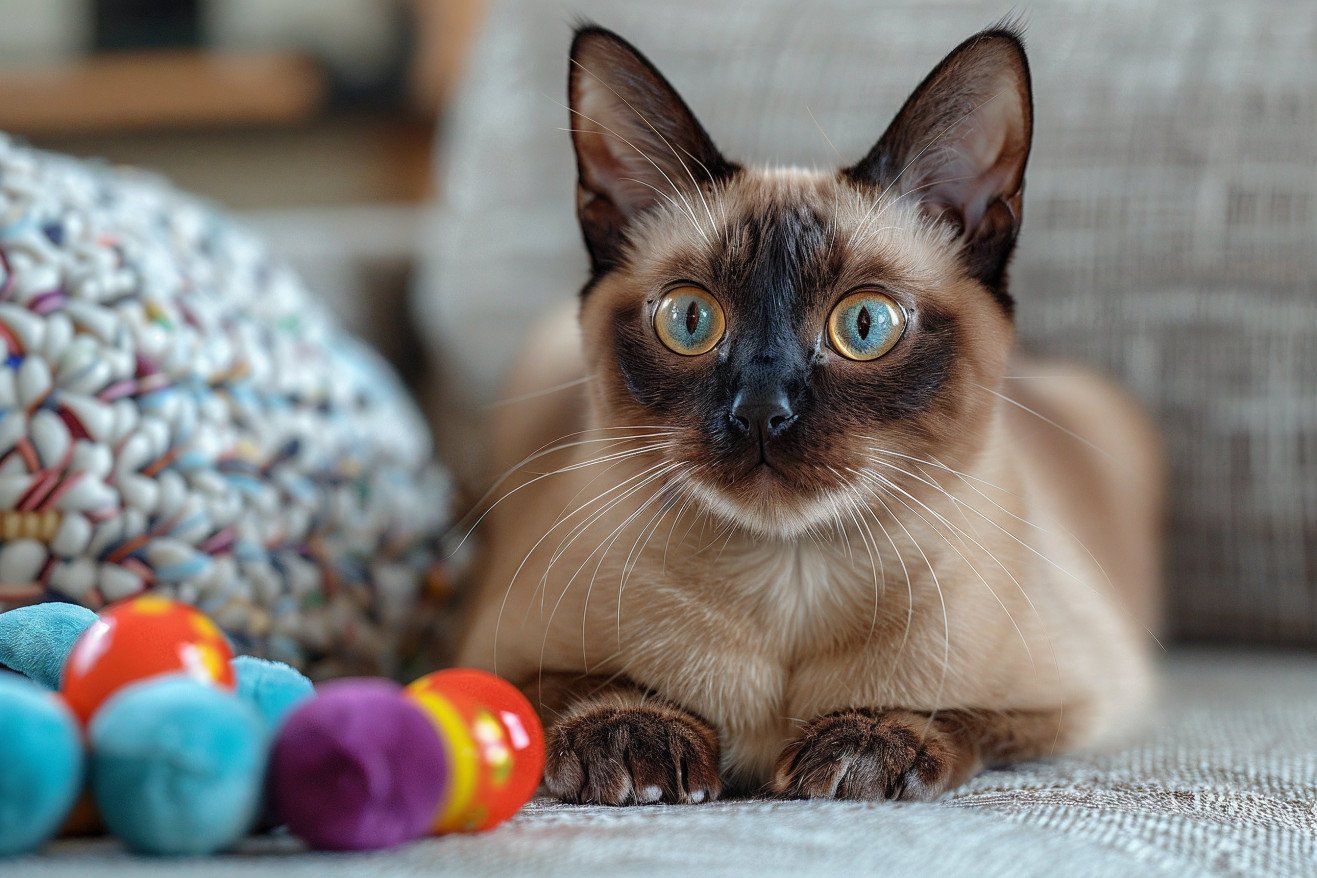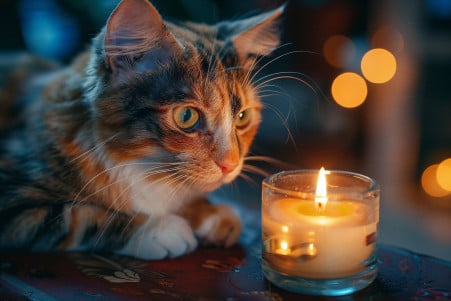What Colors Can Cats See and What Colors Do They Like? Preferences and Perceptions
11 May 2024 • Updated 11 May 2024

When it comes to everything from toys and bedding to food dishes and laser pointers, cats' vision means that some colors are more attractive to them than others. While cats can see some blues and greens, they are red-green color-blind, so they are less likely to notice colors in the red spectrum. This means that they are more likely to be attracted to brighter colors like blue, green, yellow, and even purple than they are to pastels or other muted colors.
While cats' vision is different from humans', you may have wondered if there are certain colors that cats like or are more attracted to. To answer this question, we will look at research in the fields of veterinary ophthalmology, comparative vision science, and animal behavior. By learning about how cats see the world and the ways that different wavelengths of light can trigger their natural behaviors, you can learn how to choose toys, accessories, and even home decor that will cater to your cat's individual color preferences.
What colors do cats like?
How Cats' Eyes Work
The reason for cats' limited color vision lies in the way their eyes are structured and how their eyes work. Humans have three cones in their eyes, which enables us to see the full color spectrum. Cats, however, only have two cones, one that's sensitive to blues and violets and another that's sensitive to greens and yellows, according to Purina's review of a study. This dichromatic vision means cats can't see colors that would require a third cone, such as reds, oranges, and browns.
Cats' retinas have more rods than cones, which, according to Business Insider, is typical of nocturnal animals. Rods are more sensitive to light and are responsible for night vision, but they don't help with color vision. As a result, cats' eyes are more focused on movement and seeing in low light than they are on color vision. As a result, cats see a world that's less saturated and less bright than the world we see.
While cats' two-cone system is unique, other animals' vision is also determined by the number of cones in their eyes. For example, some insects, including butterflies, can see ultraviolet light that's invisible to humans, and some snakes can see infrared light, which allows them to see heat. Birds have four cones in their eyes, which makes them tetrachromats and gives them better color vision than humans.
This shows that cats' vision is just one example of the way animals' vision can be determined by the number of cones in their eyes. By learning about the science of cats' vision, we can see that cats' vision is designed to see a world that's less bright and less colorful than the one we see.
How a Cat's Color Vision Has Evolved
Cats' color vision has evolved to meet the needs of their crepuscular (dawn and dusk) hunting patterns. According to Purina, cats' ability to see blues, greens, and yellows enables them to spot prey in their natural environment. Seeing the world in less vivid colors enables cats to see movement and other fine details more clearly, which is more important for hunting than seeing the world in full color.
As Business Insider notes, cats' ability to see well in low light and their sensitivity to movement are more important for their survival than seeing in full color. In fact, cats' inability to see reds and oranges may have evolved to help them hide from their prey, according to the Arizona State University research. This highly specialized visual system is perfectly adapted to cats' crepuscular lifestyle and hunting habits.
How to Pick the Right Colors for Cat Toys and Accessories
If you're buying toys, bedding, or other items for your cat, you'll want to make sure that you're picking colors that are best suited to their vision. According to studies on the topic of cats' color preferences, the best colors to choose are in the blue, green, and yellow families. These are the colors that cats can see the best due to their dichromatic vision, which makes blues and greens the most visible colors for them.
On the other hand, reds, oranges, and browns are the colors that cats can see the least well, so they may not be as appealing to your pet. Basepaws says that cats are "essentially red-green color blind," so these colors will look less bright and more washed out to them.
However, while color is important, Litter-Robot points out that contrast and movement are more important when it comes to getting a cat's attention. So, you may want to choose colors that are similar to those of a cat's natural prey or environment, such as greens and browns, to make sure that the toys you choose are visually stimulating. In addition, you can also make sure that you're providing a variety of colors and textures to make sure that your cat's environment is as visually interesting as possible.
How to Create a Visually Stimulating Environment for Your Cat
Cats are more likely to be attracted to and stimulated by colors, textures, and patterns that are more vibrant and stand out in their visual field. Therefore, it’s a good idea to make sure that the toys and other items you provide for your cat are colorful and that you change them out regularly to keep your cat interested.
As a result, it’s also possible that the colors that cats are exposed to during kittenhood may impact their color preferences later in life. In addition, a study cited by the Cat and Dog House found that cats with better vision were more likely to have color preferences, especially for high-contrast or vivid colors. This means that you should also take your cat’s personality and activity level into account when you’re trying to create a visually stimulating environment for them.
Overall, by learning more about a cat’s color vision and preferences, cat owners can create an environment that’s more stimulating for their pet and that better meets their natural instincts and needs. This, in turn, can help ensure that their cat is happier, more engaged, and more enriched.
Conclusion: Making Sense of a Cat's Color Vision
Cats' color vision is limited, but it is tailored to their crepuscular (dawn and dusk) hunting lifestyle. According to a study cited by Purina, cats' ability to see blues, greens, and yellows means they can see the colors of their prey in their natural environments. In addition, the fact that cats see the world in less saturated colors means they can see more contrast and detail, which is more useful for hunting than full color vision.
As Business Insider points out, cats' ability to see in low light and their sensitivity to motion are more important than their ability to see a full spectrum of colors. In fact, cats' inability to see reds and oranges may have evolved to help them hide from their prey, according to a study by researchers at Arizona State University. This means that cats' vision is perfectly adapted to their crepuscular lifestyle and hunting habits.
Further research is still needed to fully understand the complexities of feline color vision and perception. Understanding a cat's visual system can help us better understand and support these amazing animals.


